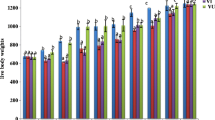Summary
A flock of 4,500 Cobb broilers inoculated with Newcastle disease vaccine intra-ocular strain B1 type at 10 days of age developed clinical signs of the disease 19 days later; the mortality rate was 71%. Necropsy examinations showed characteristic lesions. Newcastle disease virus was isolated and identified in the allantoic fluid of embryonating chicken eggs by haemagglutination and haemagglutination-inhibition tests. Histopathological examination showed that follicles of the bursa were depleted of lymphocytes, had many large cavities and were being repopulated by newly formed healthy lymphocytes. Both the acute and convalescent serum samples were positive for infectious bursal disease antibodies in agar gel precipitation tests. Haemagglutination inhibition titres of the acute and convalescent sera were 20 to 80 and 80 to 640 respectively. The vaccine failure may be due to either the subclinical bursal disease or the highly pathogenic nature of the wild Newcastle disease virus.
Résumé
Une bande de 4500 poulets de chair COBB vaccinés avec du vaccin intraoculaire de type B1 dontre la maladie de Newcastle à l'âge de 10 jours a montré des signes cliniques de la maladie 19 jours plus tard. Le taux de mortalité fur de 71%. Les examens nécropsiques montraient les lésions caractéristiques. Le virus de Newcastle fut isolé et identifié dans le fluide allantoïdien d'oeufs de poule embryonnes par les épreuves d'hémagglutination et d'inhibition de l'hémagglutination. Les examens histopathologiques ont montré que les follicules de la bourse de Fabricius étaient vidés de leur lymphocytes, présentaient de nombreuses grosses cavitiés et étaient en train d'être repeuplés par des lymphocytes sains nouvellement formés. Les échantillons de sang provenant d'oiseaux convalescents et en état de maladie aigue étaient positifs pour les anticorps de la bursite infectieuse, dans les épreuves de précipitation en agar. Les titres par l'hibition de l'hémagglutination des sérums en phase aigue ou convalescents étaient de 20 à 80 et 80 à 640 respectivement. L'echec de la vaccination peut avoir été dû soit à la bursite infectieuse sub clinique soit à la nature hautement pathogène du virus sauvage de la maladie de Newcastle.
Resumen
Un grupo de 4.500 broilers Cob, los cuales fueron inoculados contra Newcastle vïa intraocular, con la cepa B1 a los 10 dïas de edad, desarrollaron la enfermedad 19 dïas más tarde; la mortalidad fue del 71%. La necropsia de las aves reveló lesiones caracteristicas. El virus fue aislado en huevos embrionados e identificado mediante las pruebas de hemaglutinación e inhibición de la hemaglutinación. El exámen histopatológico de la bolsa de Fabrico reveló que los foliculos estaban desprovistos de linfocitos y que se encontraban en periódo de recuperación. La prueba de precipitación en agar-gelatina fue positiva para Gumboro, en sueros tomados durante el estado agudo y convaleciente de la enfermedad. Los tïtulos de la prueba de inhibición de la hemaglutinación de los sueros “agudos” y “convalecientes” fluctuaron de 20 a 80 y de 80 a 640 respectivament. La falla en la vacunación, posiblemente se debió a la enfermedad subclïnica de Gumboro o a la alta virulencia de la cepa viral de Newcastle aislada.
Similar content being viewed by others
References
Adene, D. F. & Njoku, A. (1979).Nigerian Veterinary Journal,8, 71–72.
Ajinkya, S. M., Survashe, B. D. & Sardeshpande, P. D. (1980).Indian Veterinary Journal,57, 265–269.
Armstrong, L. D., Tabel, H. & Riddell, C. (1981).Canadian Journal of Comparative Medicine,45, 26–33.
Beard, C. W. & Brugh, M. (1975).American Journal of Veterinary Research,36, 509–512.
Dongaonkar, V. D., Kolte, G. N. & Rao, K. N. P. (1979).Indian Veterinary Journal,56, 541–545.
Faragher, J. T. (1971). Studies on Gumboro disease of the fowl. PhD thesis, London.
Fatunmbi, O. O. & Adene, D. F. (1979).Nigerian Veterinary Journal,8, 30–32.
Hitchner, S. B., Domermuth, C. H., Purchase, H. G. & Williams, J. E. (1975).Isolation and Identification of Avian Pathogens, Arnold Printing Corporation, Ithaca, New York, pp. 327–337.
Lucio, B. & Hitchner, S. B. (1980).Avian Diseases,24, 189–196.
Okoye, J. O. A. & Uzoukwu, M. (1981).Avian Deseases,25, 1034–1038
United Kingdom Epidemiology Unit, Central Veterinary Laboratory (1981).Veterinary Record,108, 88–89.
Westbury, H. A. (1978).Australian Veterinary Journal,54, 349–351.
Winterfield, R. W. (1969).Avian Diseases,13, 548–557.
Author information
Authors and Affiliations
Rights and permissions
About this article
Cite this article
Okoye, J.O.A., Shoyinka, S.V.O. Newcastle disease in a vaccinated flock which had experienced subclinical infectious bursal disease. Trop Anim Health Prod 15, 221–225 (1983). https://doi.org/10.1007/BF02242062
Accepted:
Issue Date:
DOI: https://doi.org/10.1007/BF02242062




